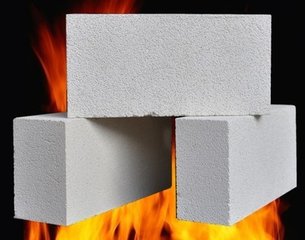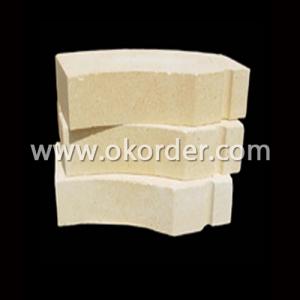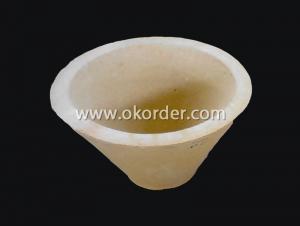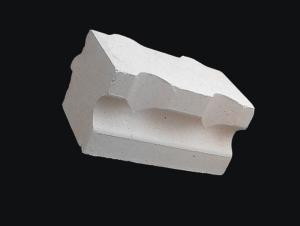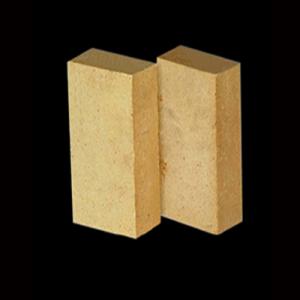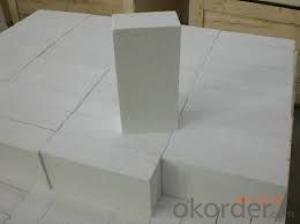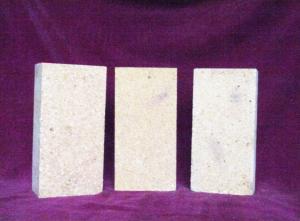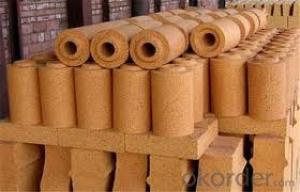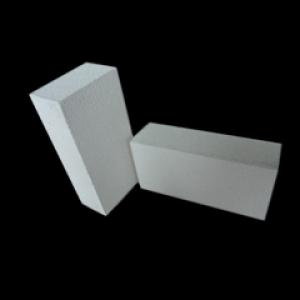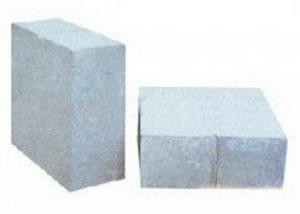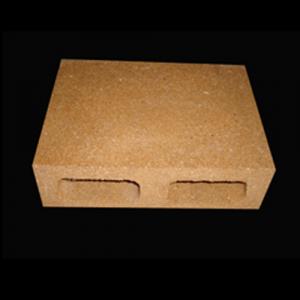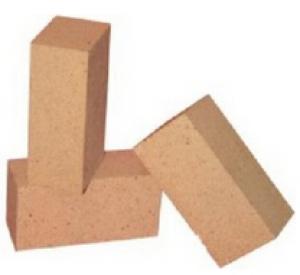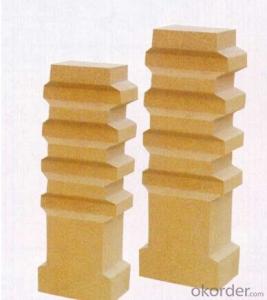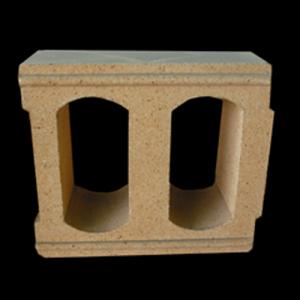High Alumina Bricks - High Quality
- Loading Port:
- China Main Port
- Payment Terms:
- TT OR LC
- Min Order Qty:
- -
- Supply Capability:
- -
OKorder Service Pledge
OKorder Financial Service
You Might Also Like
In aqueous alumina minerals (monohydrate diaspore, sanshui diaspore, etc.) as the main composition of high bauxite;
The family of sillimanite minerals (including kyanite, andalusite, sillimanite, etc.);Synthetic raw materials, such as industrial alumina, synthetic mullite, fused corundum and so on.China high alumina bauxite resources, quality is good, producing area are mainly distributed in shanxi, henan, hebei, guizhou,
shandong and other places.Produced by high aluminium vanadium and soil, mainly diaspore monohydrate (alpha Al2O3 · H2O) and kaolinite and the mixture of two kinds of minerals.\ n high bauxite with rotary kiln and vertical kiln calcination, sintering temperature of 1500 ~ 1700 ℃.
Sintered bauxite, bibulous rate is in commonly 4 to 7%。
3 oxidation 2 aluminium (Al2O3) content higher than 48% of the silicate aluminum refractory products.Such as Al2O3 content higher than 90%,
called corundum brick.Due to different resources, the national standard is not entirely consistent.Such as European countries for high aluminum
refractory Al2O3 content lower limit is 42%.In China, according to the high alumina bricks are usually divided into three classes: Al2O3 content in Ⅰ etc. ─ ─ the Al2O3 content > 75%.Such as Ⅱ ─ ─ Al2O3 content is 60 ~ 75%;Such as Ⅲ ─ ─ for 48 ~ 60% Al2O3 content.
The raw material According to the resource conditions and different requirements for products, can use the following categories of the material: with water alumina minerals (monohydrate diaspore, sanshui diaspore, etc.) as the main composition of high bauxite;The family of sillimanite minerals (including kyanite, andalusite, sillimanite, etc.);Synthetic raw materials, such as industrial alumina, synthetic mullite, fused corundum and so on.China high alumina bauxite resources, quality is good, producing area are mainly distributed in shanxi, henan, hebei, guizhou, shandong and other places.Produced by high aluminium vanadium and soil, mainly diaspore monohydrate (alpha Al2O3 · H2O) and kaolinite and the mixture of two kinds of minerals.
High bauxite with rotary kiln and vertical kiln calcination, sintering temperature of 1500 ~ 1700 ℃.Sintered bauxite, bibulous rate is in commonly 4 to 7%.
- Q: What is fireproof concrete?
- A series of concrete with fire resistance and heat resistance is made of Portland cement series as cementing material and heat-resistant material as aggregate. Silicate fireproof heat-resistant concrete with Portland slag cement, Portland cement and water glass as cementing material, broken clay brick, clay, cement clinker, broken high alumina brick as aggregate.
- Q: What is the standard size of high alumina brick?
- The country has laid down a number of criteria for the use of refractory bricks to unify market demand.
- Q: How many cubic bricks does a high alumina brick have?
- Different content of aluminum, different proportion, weight is not the same. General grade T3 standard brick, 4.3~4.5kg, aluminium content 75. T3 size 230*114*65mm.
- Q: How are the high alumina bricks fired?
- According to the quality requirements of different grades of high alumina brick, choose different grades of bauxite raw materials, it is conducive to rational use, fine materials, fine distribution, as far as possible not to use mixed grade severe raw materials. The quality of the clinker depends on the calcination temperature, calcination temperature, sintering temperature should be generally reached or slightly higher than that of alumina clinker sintering, to ensure the full and possible high volume density, and the two secondary Mullitization and sintering shrinkage effect in calcination process. Lightweight high alumina brick, also known as high aluminum insulation brick (high-aluminium heat insulating brick). A lightweight refractory consisting of mullite and glass phases or corundum in excess of 48%. The volume density is 0.4 ~ 1.35g/cm3. The porosity is 66% ~ 73%, and the compressive strength is 1 ~ 8MPa. Better thermal shock resistance.
- Q: The cloth blowing is not uniform on the lime kiln refractory brick is damaged it
- Lining 1 yuan to prevent direct damage to the Sindh kiln high temperature flame or air, to protect the kiln carcass; 2, to prevent harmful substances (CO, SO2) erosion of the kiln body; 3, to prevent corrosion, material flow on the kiln body; 4, reduce the kiln temperature, kiln body to prevent oxidation 5, has the function of corrosion; thermal insulation; 6, to improve the coating performance.
- Q: What are the specifications for bricks?
- In a proper ratio of lime sand brick and quartz sand, sand or fine sand, the ground, Kazumi Wa, semi dry pressing and autoclaved curing and. The fly ash brick is made of fly ash as main raw material and mixed with cement material such as coal gangue, stone powder or clay. It is made up of batching, molding, drying and roasting. It can make full use of industrial waste residue and save fuel.
- Q: What is spalling resistant high alumina brick?
- Spalling resistant high alumina brick is a kind of high alumina brick. Antistripping high alumina brick with high grade bauxite and containing Zr02 synthesis as raw material, according to a certain proportion by high pressure molding system in sintering products, products with anti stripping ability, and have the anti erosion potassium, sodium, sulfur, chlorine and alkali salt, low thermal conductivity and other properties that is the transition zone of cement kiln and decomposition of ideal material with remarkable characteristics, the product is good thermal shock resistance, strong ability to adapt to the environment. It is used in the preheating or decomposing furnace, grate cooler and so on.
- Q: What are ordinary bricks, refractory bricks, hollow bricks?
- Hollow brick is divided into cement hollow brick, clay hollow brick, shale hollow brick. In March 2011 Yunnan Yingjiang earthquake occurred in 5.8, the use of cement hollow brick houses collapsed and killed several people, due to safety concerns that Yunnan intends to disable the cement brick, Shandong Qingdao in the construction of real estate has also been halted the use of cement hollow brick. Professional claims in the construction industry argue that the prohibition of the use of such statements is unscientific and unprofessional. Misleading the public, it must be corrected. Hollow brick is only a kind of building material, and it is no problem to use it in scientific way. Hollow brick in use is very scientific, high quality requirements, the investigation of the foundation is suitable for the use of hollow bricks, how to design, construction, cement and other related ingredients, there are no problems. According to strict procedures, scientific use, strict implementation of relevant national standards, the use of qualified hollow bricks, there is no problem. Similarly, if the use of solid bricks does not strictly comply with the relevant standards of the state, the same will be a problem.
- Q: The difference between light high alumina brick and heavy aluminum brick
- Lightweight high alumina brick, also called high alumina insulation brick. Alumina content of 48% or more, mainly from mullite and glass phase or corundum composition of lightweight refractory. Volume density 0.4 - 1.35g/cm3. Porosity 66% - 73%, compressive strength 1 - 8MPa. Better thermal shock resistance. Usually, a high alumina clinker is added with a small amount of clay. After grinding, it is poured and shaped in the form of slurry by gas generation or foam method, and it is fired at 1300 - 1500 DEG C. Sometimes industrial alumina can be used instead of some bauxite clinker. Used for lining and insulation of masonry kilns, as well as for areas where there is no strong, high temperature molten material erosion and erosion. When contacting the flame directly, the surface contact temperature shall not be higher than 1350 degrees centigrade.
- Q: What are the lining structures of lime rotary kilns and what are the requirements for refractories?
- The current configuration of domestic calcining active lime rotary kiln refractories are as follows: the discharge end of low cement high alumina castable with 3% steel fiber; the cooling zone and the firing zone: dry magnesia spinel brick with high aluminum brick with high temperature; preheating: high alumina brick; low temperature preheating zone: clay brick light clay brick; feeding end: low cement high alumina castable with 3% steel fiber; in addition, brick size also have the corresponding requirements; dimensional tolerances: dimensional tolerances used in different parts of the requirements are not the same, the general control in 2mm; corner damage: general permit edge damage 40mm and 5mm deep within angle loss in the hot and cold surface is allowed to have only one, three edges and the length of not more than 50mm; there are cracks parallel to the use of surface crack is not allowed, cracks of brick surface are allowed.
Send your message to us
High Alumina Bricks - High Quality
- Loading Port:
- China Main Port
- Payment Terms:
- TT OR LC
- Min Order Qty:
- -
- Supply Capability:
- -
OKorder Service Pledge
OKorder Financial Service
Similar products
Hot products
Hot Searches
Related keywords





